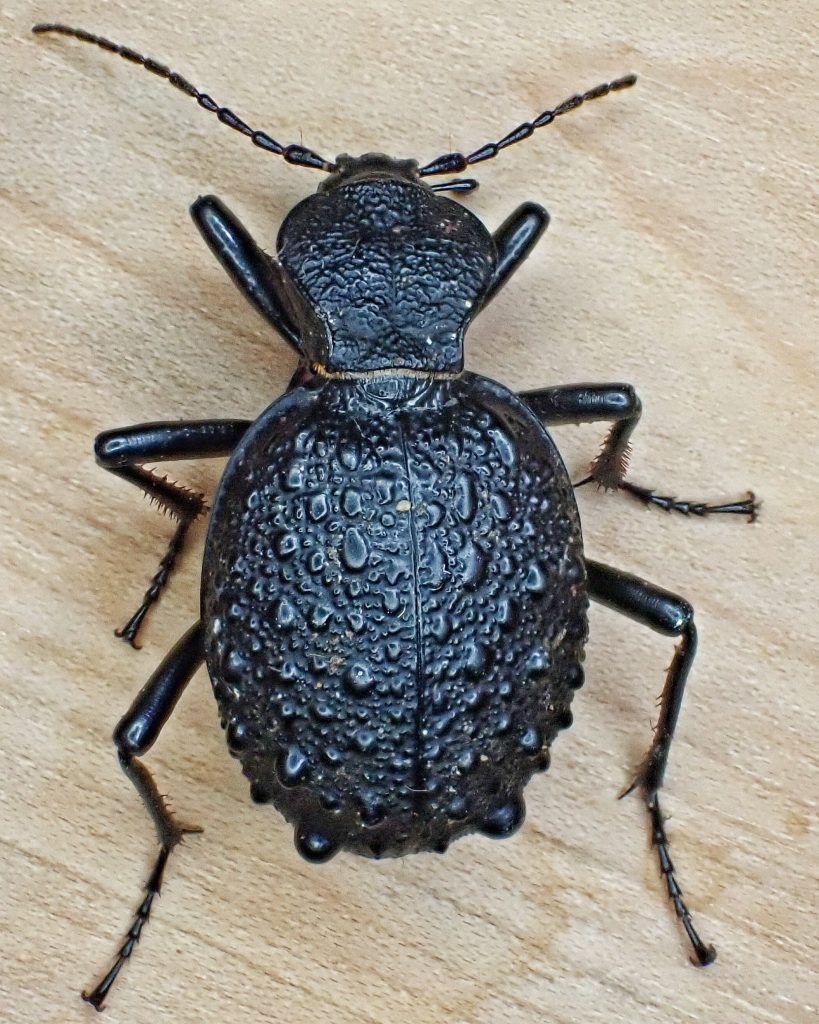
This carabid beetle was yet another great find by my grandson Lee on our trip to the confluence of the Green/NF Toutle River. Its head and pronotum were calmly ensconced in the aperture of an Ancotrema sportella snail shell, presumably sucking up the soup it’s digestive enzymes had made of the little gastropod, but I got over excited when I saw the tuberculate elytra sticking out of the shell, and wasted a great photo opportunity by picking it up, at which point the beetle disengaged from the snail. Even though I housed it with another snail for 4 days, I never did get a photo of it feeding on the snail, and eventually I gave them both their freedom.
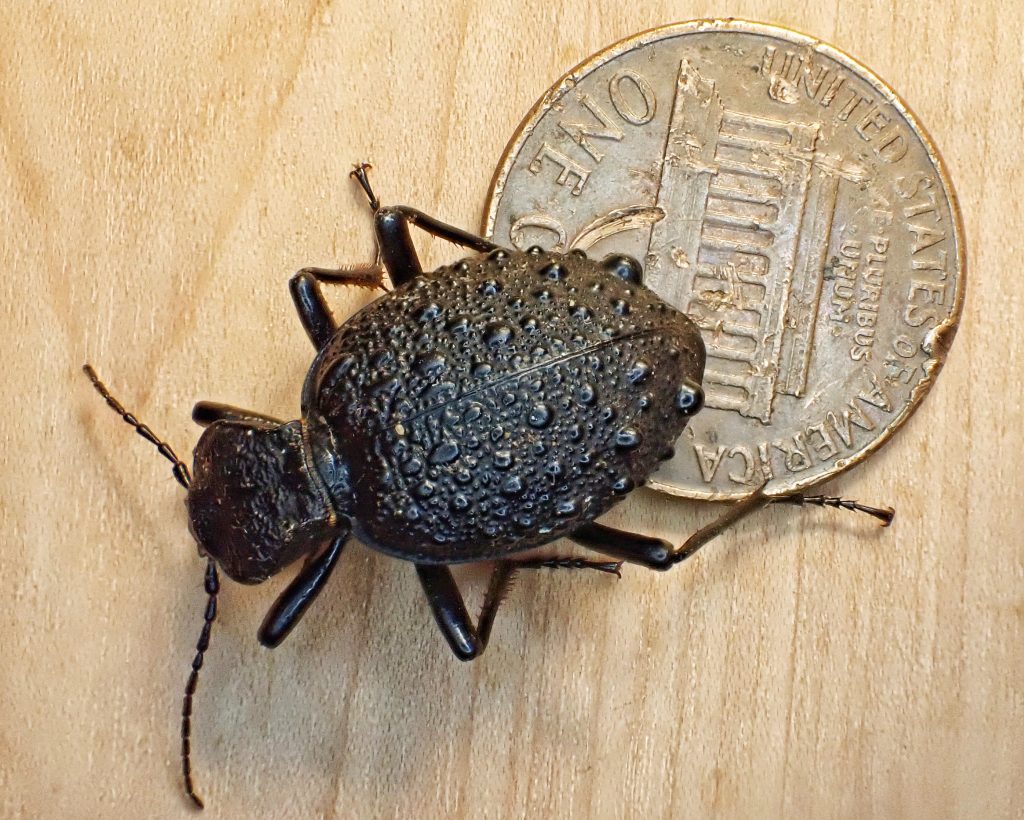
This was my first encounter with one of these uncommon but, despite the common name, not rare beetles. In fact the label ‘rare snail-eating beetle’ is more appropriately applied to the genus Cychrus as a whole. I am always attracted to invertebrates with sculptured exoskeletons, since it seems ornamental, although it is probably not. The photos I had seen of the elytra of Cychrus tuberculatus looked quite geometric, and the living bug was as beautiful as I had expected, with its narrow, utilitarian head and pronotum, and the glossy, black features on the wingcases.
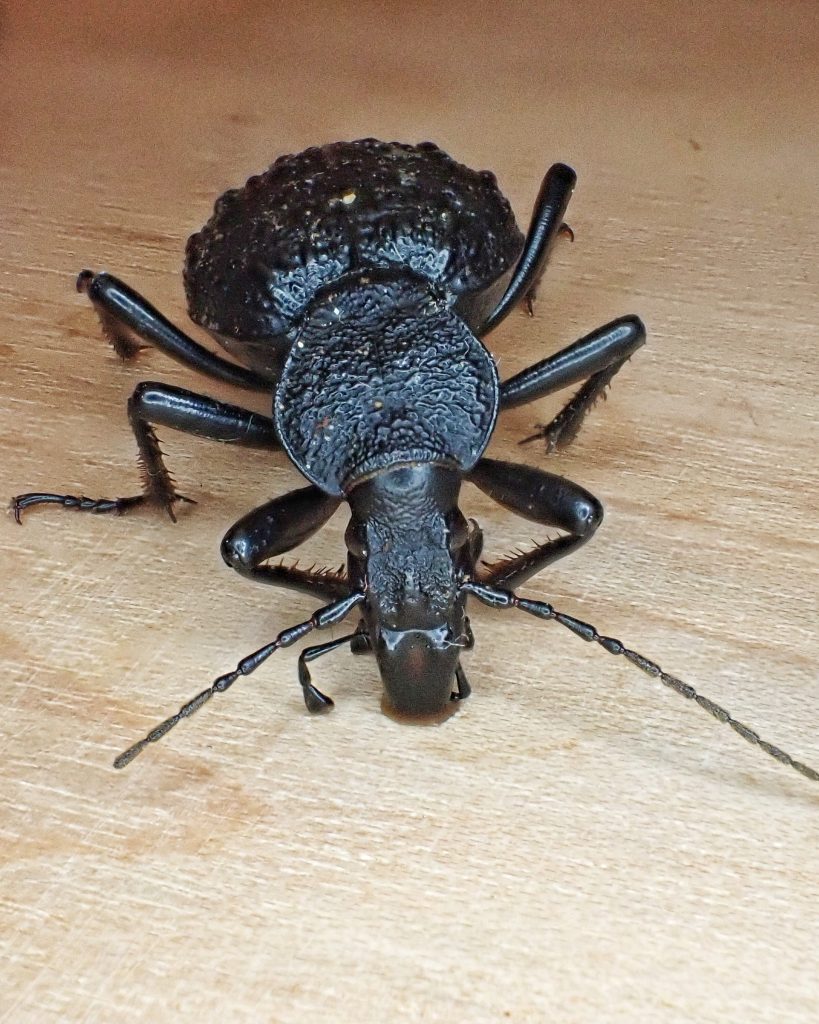
“This ground beetle, like others of its taxonomic group Tribe Cychrini , is incapable of flight due tofused and highly reduced wings. As its name indicates, the tuberculate rare snail-eating beetle preys upon snails, and it has bumps (tubercles, hence ‘tuberculate’) across its back. It is nocturnal, and it may be found in moist shaded areas of coniferous forests, clearings, and moraine habitats. It has been recorded from BC south to California.” Tuberculate rare snail-eating beetle • Cychrus tuberculatus – Biodiversity of the Central Coast
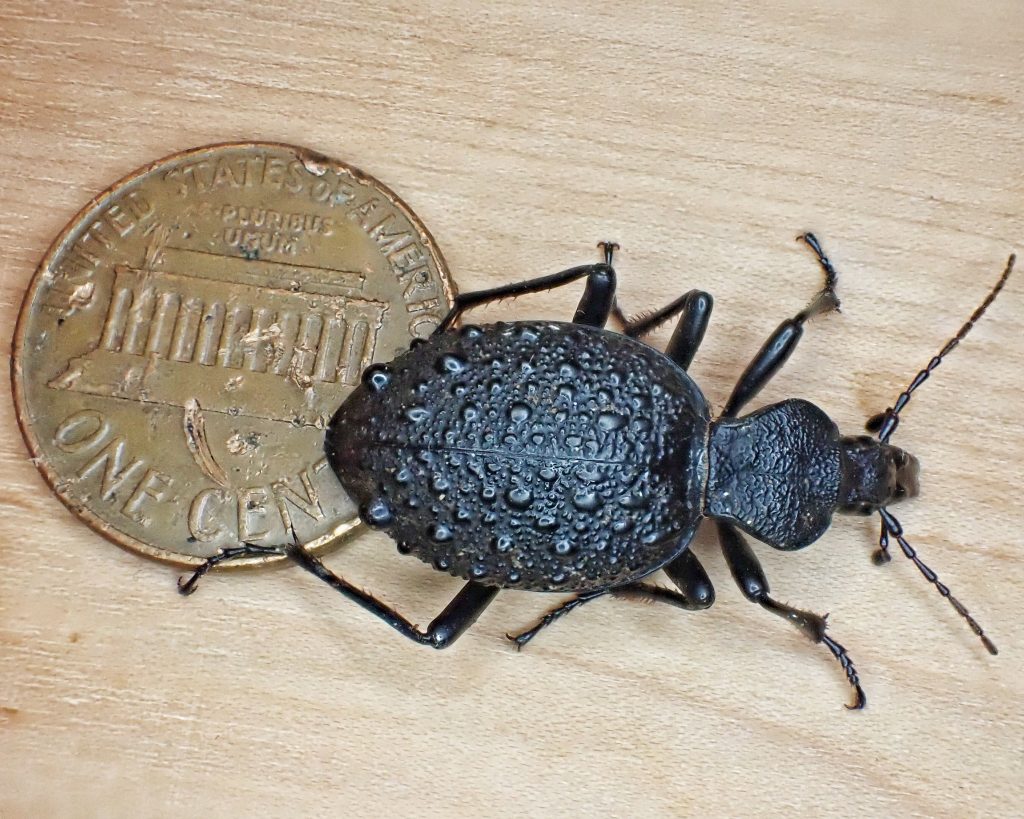
Description– “A very large (21-25.3 mm) species with a dull black body and appendages. The surface of head and pronotum with thin, raised, irregularly shaped interconnecting ridges. Elytra covered with distinct, shiny tubercles of varied size; the largest tubercles arranged in three or four longitudinal rows.” Coleoptera: Cychrus tuberculatus ; the head and pronotum are much narrower than the eleytra.
Similar species– Cychrus hemphillii has much smaller tubercles, except near the apex, and they are not arranged in rows.
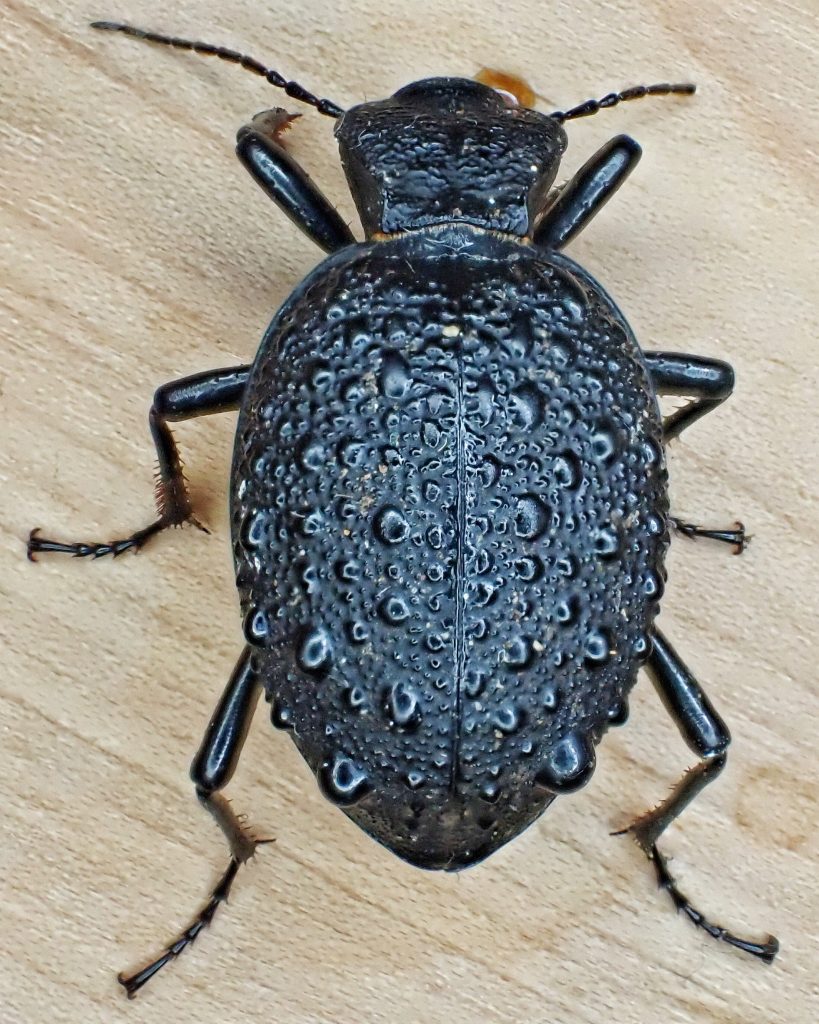
Habitat– “Restricted to heavy deciduous and coniferous forests, occurring in leaf litter and under logs on forest floor.” Coleoptera: Cychrus tuberculatus ;
Range– “Found on the west coast of North America, north to the Queen Charlotte Islands, south to northwestern California and east to the Cascade Range.” Coleoptera: Cychrus tuberculatus
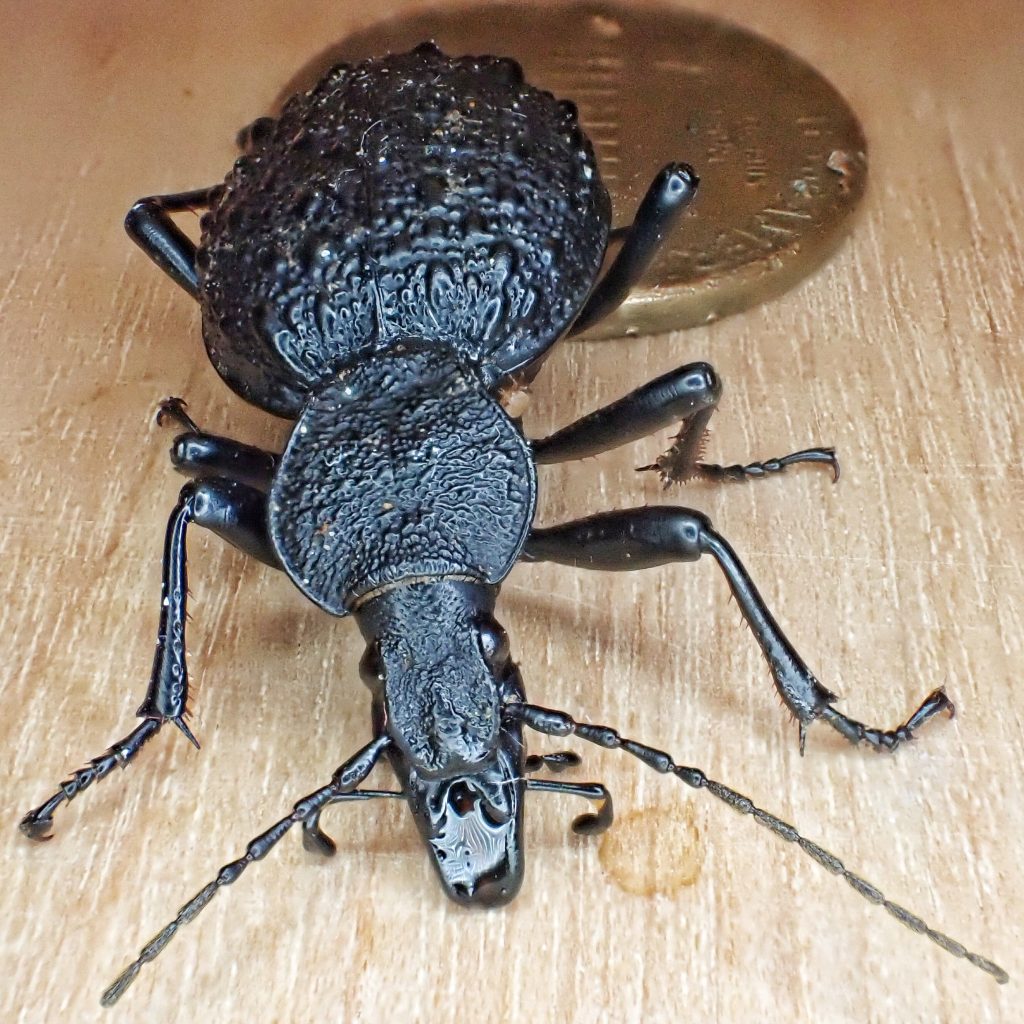
Eats– Slugs and snails
Eaten by– Presumably any insectivore that can catch and subdue them.
Adults active-Nocturnal; April- September
Life cycle– Overwinters as larvae in diapause.
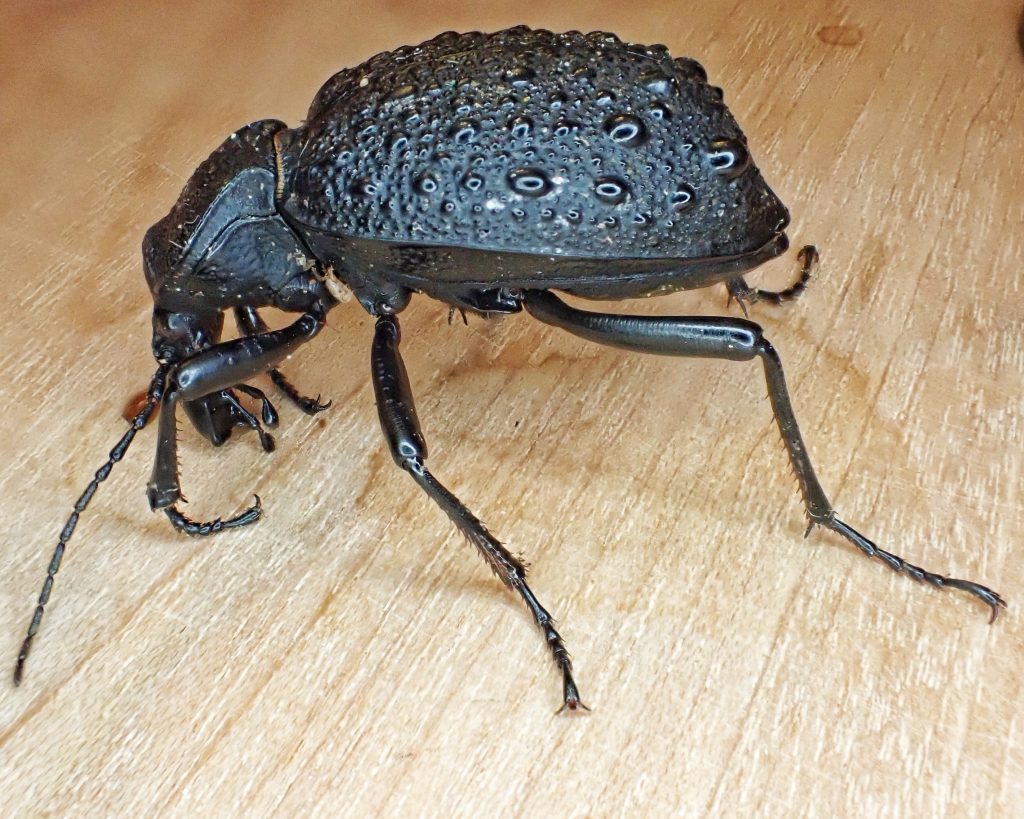
Etymology of names– Cychrus is from Kychreus, the son of Poseidon and Salamis in Greek mythology. The specific epithet tuberculatus is from the Latin word for ‘tumor/hump/knob, and refers to the abundant bumps on the elytra.
Tuberculate rare snail-eating beetle • Cychrus tuberculatus – Biodiversity of the Central Coast
Coleoptera: Cychrus tuberculatus
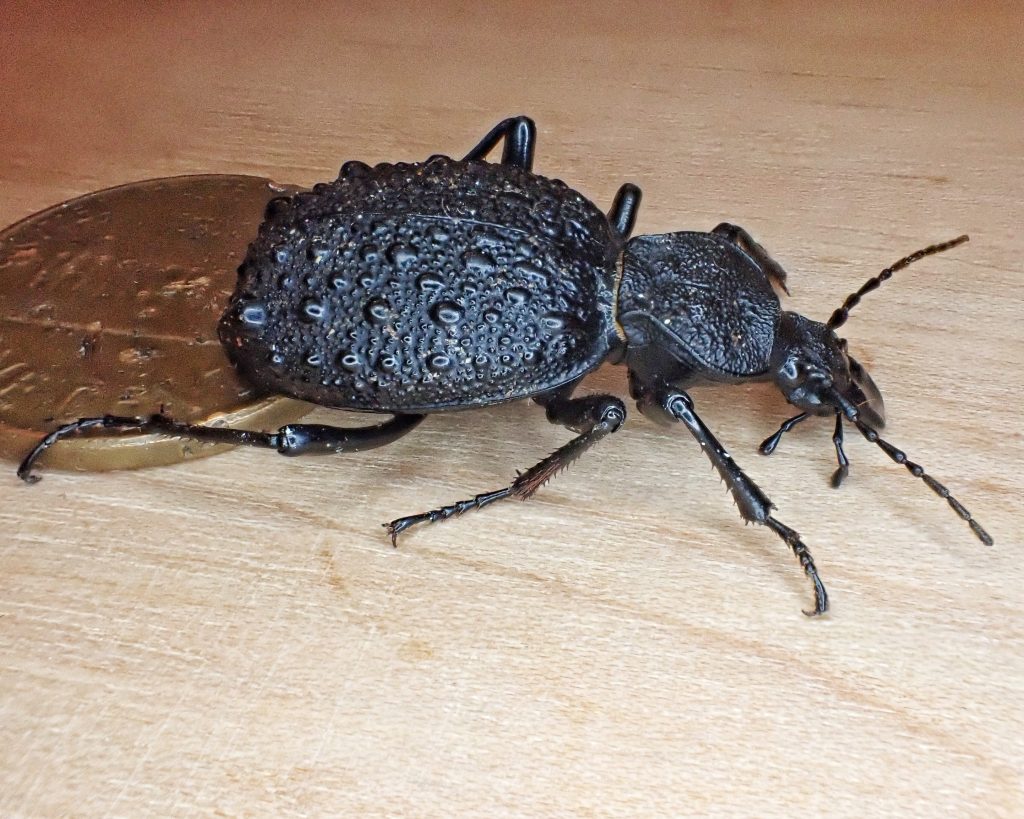
Lovely texture! I’ve only ever seen the Narrow-Collared Snail-Eating Beetle.
Those are the much more common snail-eating carabids in our region